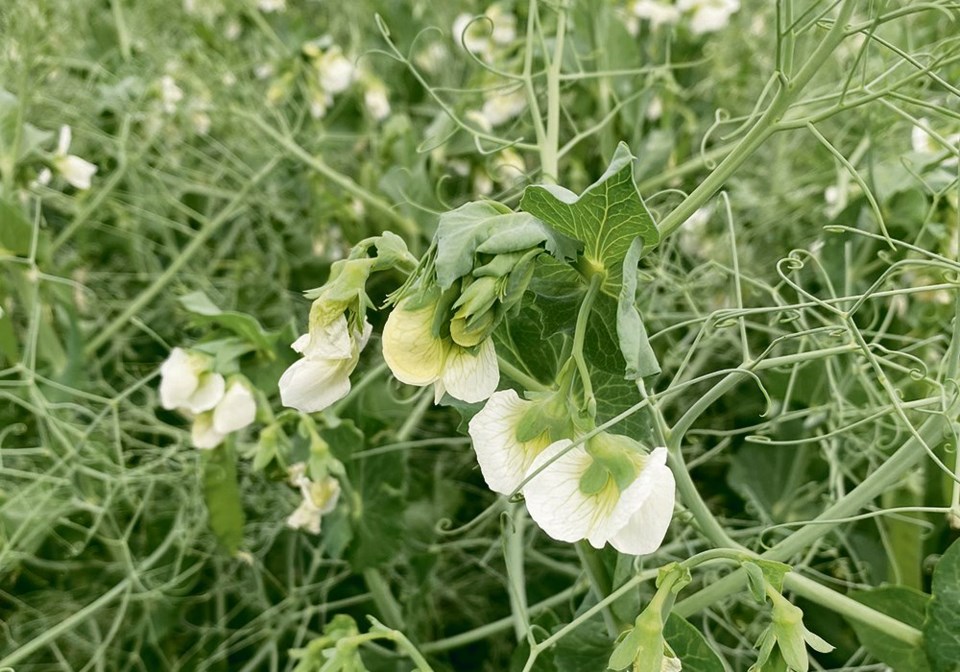WESTERN PRODUCER — Russia is expected to ship more peas to China than Canada will in 2023-24.
Gaurav Jain, analyst with AgPulse Analytica, is forecasting 1.2 million tonnes of Russian exports compared to one million tonnes from Canada.
“Most of the feed pea demand will be shifted to Russian peas,” he said.
Canada used to have a stranglehold on the Chinese market, up to and including this year.
But that changed when Russia and China signed a phytosanitary agreement in December 2022, paving the way for Russian peas to make inroads into that market.
There has been a slow start to the new trade route, with China importing 3,569 tonnes of Russian peas in March and 14,736 tonnes in April.
But Jain anticipates that will quickly ramp up to 70,000 to 80,000 tonnes by July due to the US$90 to $100 per tonne price discount for Russian versus Canadian product.
Russia is charging $310 per tonne delivered to inland China, where the livestock industry is located, while Canadian exporters are charging $400 to $410 delivered to ports on the east coast of the country.
He believes the stiff competition from Russia will put downward pressure on Canadian prices, especially with the huge supply expected from Russia in 2023-24.
Jain is forecasting 3.15 million tonnes of Russian pea production, down from last year’s 3.62 million tonnes, according to a presentation he prepared for the Global Pulse Confederation’s Pulses 23 conference.
However, carryout from the 2022-23 crop is expected to be a monstrous 1.46 million tonnes, resulting in 4.62 million tonnes of total supply. That would give Russia one million tonnes more than Canada to work with.
Russia had trouble moving peas to the European Union and С����Ƶ Asia during the first half of 2022-23 due to sanctions, logistical problems and high container freight rates.
But Italy and Spain are now purchasing regular vessels and peas are moving to China.
Jain is forecasting 1.7 million tonnes of Russian pea exports in 2023-24, up from 1.1 million tonnes this year. Domestic consumption of the crop is forecast at 1.91 million tonnes, down from 1.83 million.
Canada will maintain its title as the world’s leading exporter, shipping out an estimated 2.35 million tonnes of the crop in 2023-24, down from an estimated 2.5 million this year.
Canada has shipped 2.18 million tonnes through the first nine months of 2022-23. China has accounted for 55 percent of that volume.
China is expected to step up its overall purchases in 2023-24, importing 2.3 million tonnes of the crop, up from 1.8 million tonnes this year. That is because Russia is forcing prices down.
Canada is expected to retain all the pea protein business in China, where fractionation plants have been running at about half of their 700,000 tonne per year capacity.
“If that (volume) remains low, then Canadian prices will go further down,” said Jain. “That will be a big bearish factor for Canadian peas.”
Another new dynamic in the pea market is that Turkey is becoming a big re-exporter of the crop, just as it does with lentils.
The country is expected to import 341,000 tonnes of peas and export 338,000 tonnes in 2022-23. That is about five times the volume it was doing a couple of years ago.
Turkey is importing peas from Russia and Ukraine and shipping them to markets including Iraq. Turkey is a big contributor to the World Food Program and the WFP likes to use cheap Black Sea peas.
Contact [email protected]



